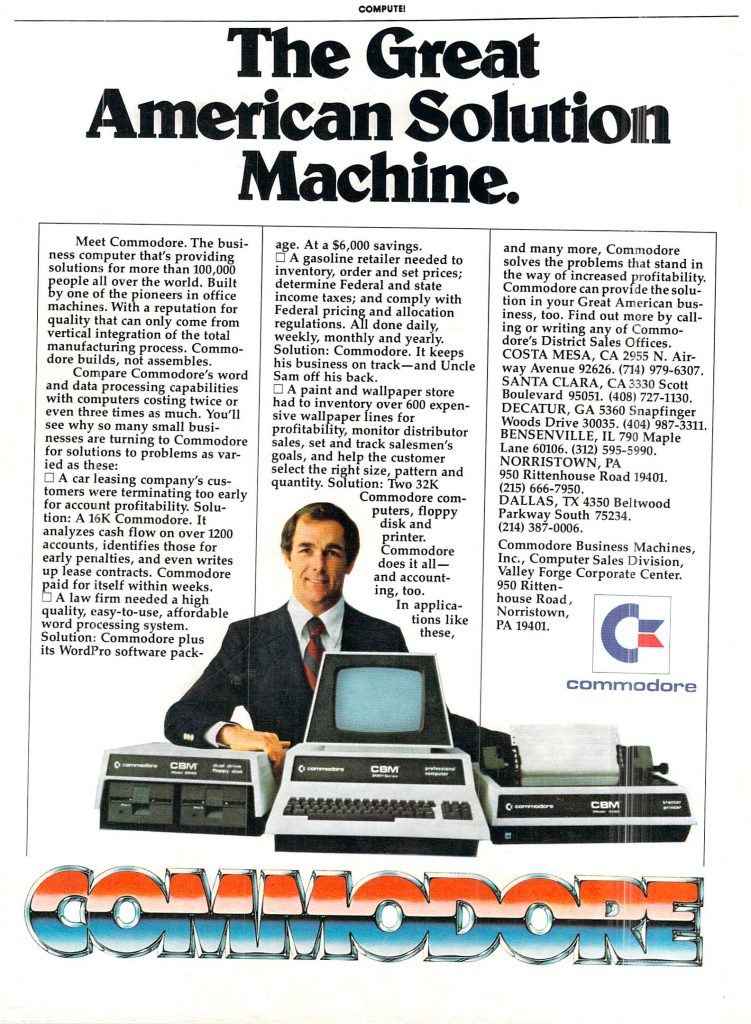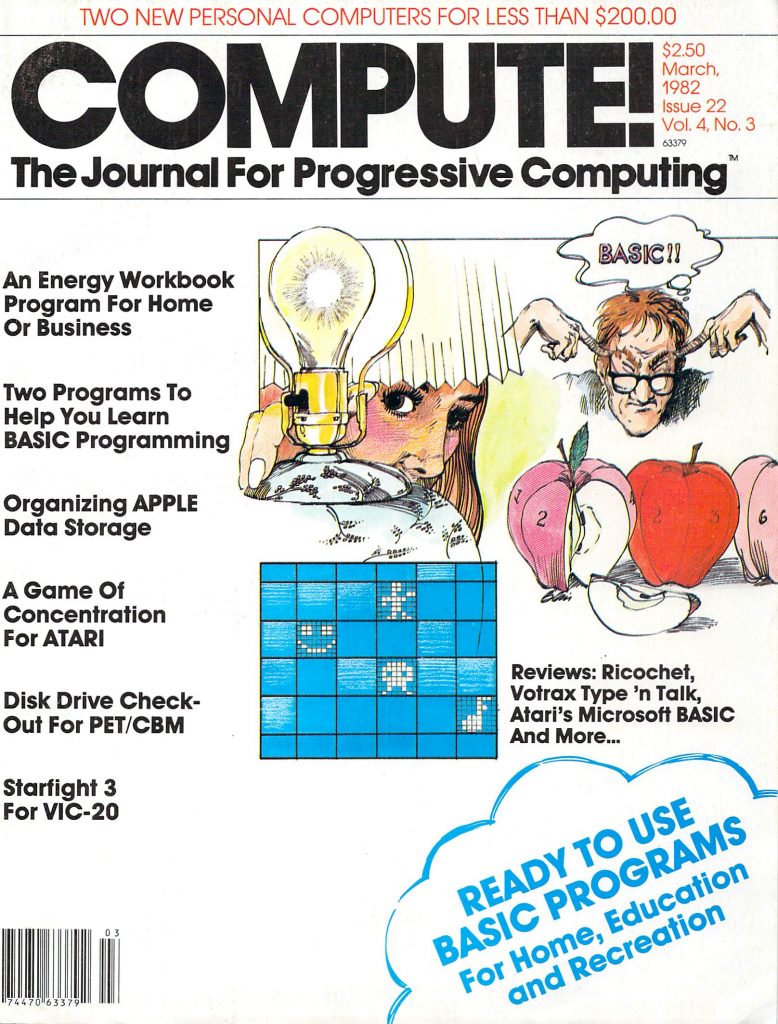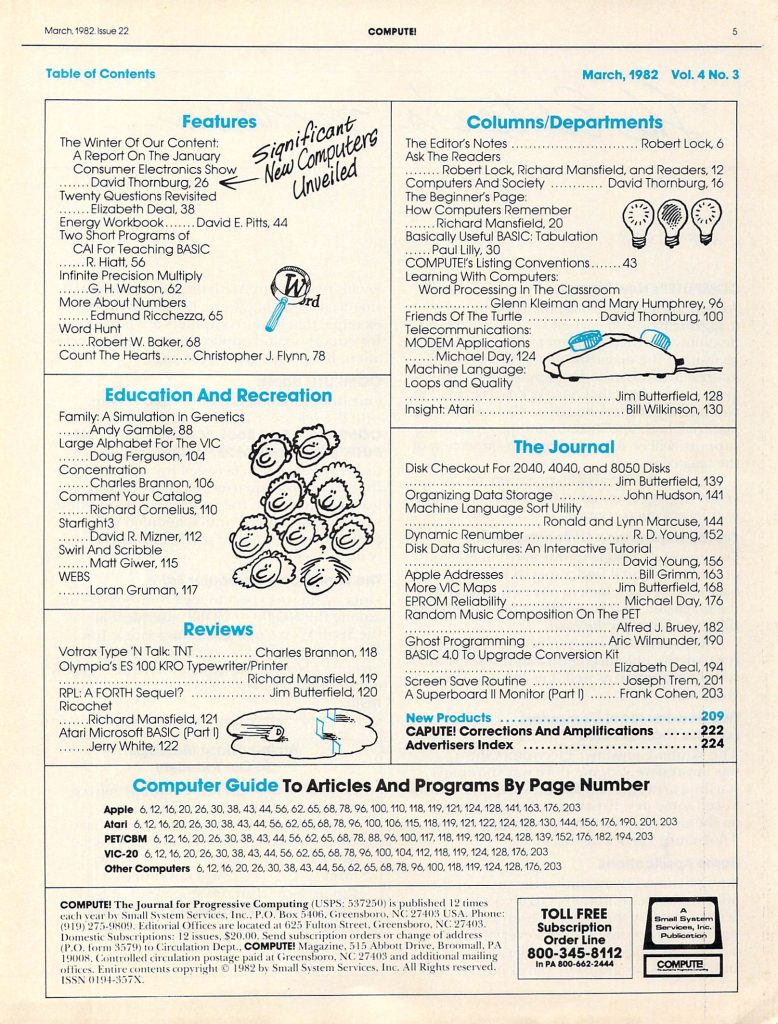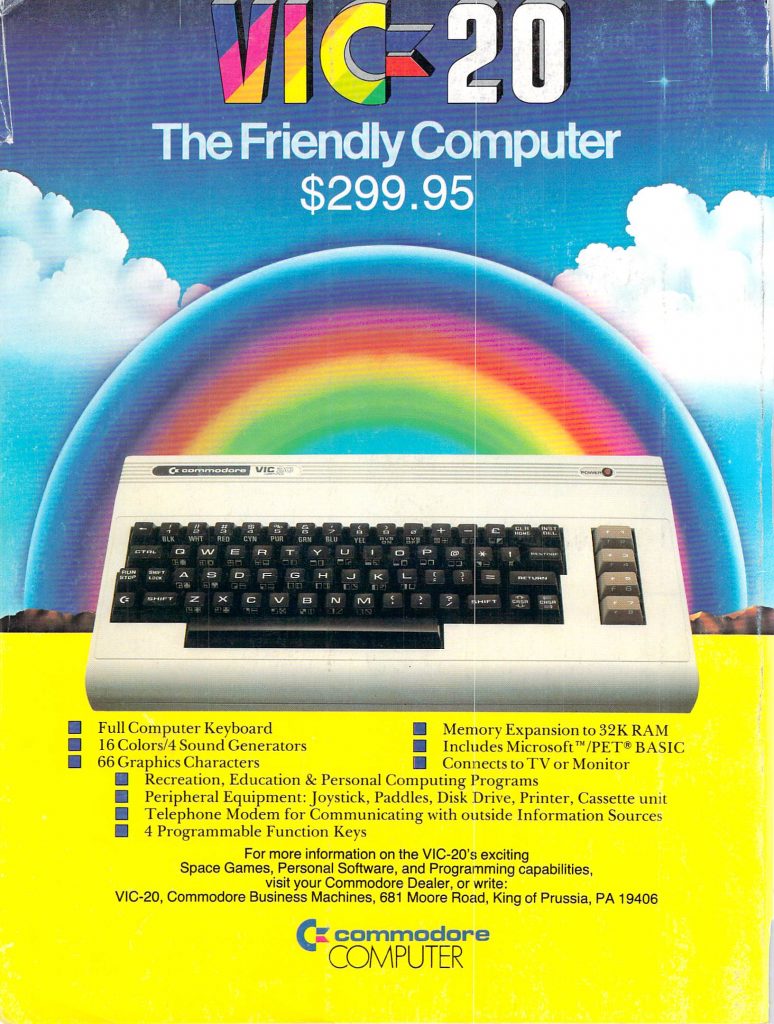Source: Commodore Power/Play – Spring 1983
Commodore Power/Play was one of Commodore’s early official publications. This magazine emphasized home and entertainment usage. In 1983 this meant mostly the VIC-20 and the then still fairly new Commodore 64. The Spring 1983 issue includes:
Features
- New Game Cartridges for the Commodore 64 – The cartridge format for games was really only briefly popular. Pretty soon most games were released on disk, at least in the U.S. Here’s a look at some early cartridge games including Jupiter Lander, Radar Ratrace, Speed Math/Bingo Math, Kickman, and Tooth Invaders
- I Program with Gortek – A look at Gortek and the Microchips, a programming tutorial developed by Commodore for kids.
- Making Friends With SID, Part 2 – Part 2 of an ongoing series on the Commodore 64’s SID chip including some examples of how to generate sound and music.
- Decwar! – A look at this multiplayer interstellar war game available on CompuServe.
- Getting the Chores Done – A type-in program for the VIC-20 to help organize and assign chore.
- VIC Super Piano – A type-in program that turns your VIC-20 into a piano with which you can also record and playback music with visual effects.
- Machine Language is a POKEr’s Game – A guide to incorporating machine language routines into your own programs.
Departments
- Braindrops – The magazine reaches 100,000 readers plus a look at the changes in this issue.
- The VIC Magician – A guide to programming the function keys of the VIC-20.
- Butterfield – Learn how to make music on your Commodore 64.
- High Scores – High scores for Blue Meanies, Car Chase, Cosmic Cruncher, Draw Poker, Jupiter Lander, Gorf, Midnight Drive, Mole Attack, Omega Race, Pinball Spectacular, Radar Rat Race, Raid on Fort Knox, Sea Wolf, Sky Is Falling, Slither, Super Alien, Super Slither, Super Slot, Super Smash and VIC Avenger.
- User Group Spotlight – The story behind the New Mexico Commodore Users Group.
- Access: Commodore User Groups – A comprehensive list of Commodore user groups around the world.
- Jiffies – Brief looks at new software including two new cassette six packs for the VIC-20. The first includes NumBowl, LCM Machine, Sector Five, Backfire, Ruler Dueler, and Scare City Motel. The second includes VIC Synthesizer, Crawler, Alpha Draw, Super Seekers, Big Bad Wolf, and Treasures of the Bat Cave. Also reviewed are Pinball Spectacular for the VIC-20, The VIC Programmable Character Set & Gamegraphics Editor, and more.
- Program Listings – Type-in programs including Crazy Balloons (guide your balloon through an obstacle course without popping it), Fill-in-the-Blanks (a mad libs sort of thing), Craps (the dice game), Lazy Line Numbering (a program to auto number lines in your programs), and Phone Home (a guessing game featuring E.T.).
- Tele / Scope – A type-in program for capturing your online sessions to save to disk and/or print.
- Book Review – Reviews of Compute!’s First Book of VIC and True Names.
- New Products – The most interesting thing here is the announcement of an Atari to VIC-20 cartridge adapter that supposedly let you play Atari 2600 games on the VIC-20. Multiple companies advertised such devices but as far as I know, they were all vaporware. Perhaps it was really a ploy by Commodore to get people to buy more VIC-20s?
…and more!








